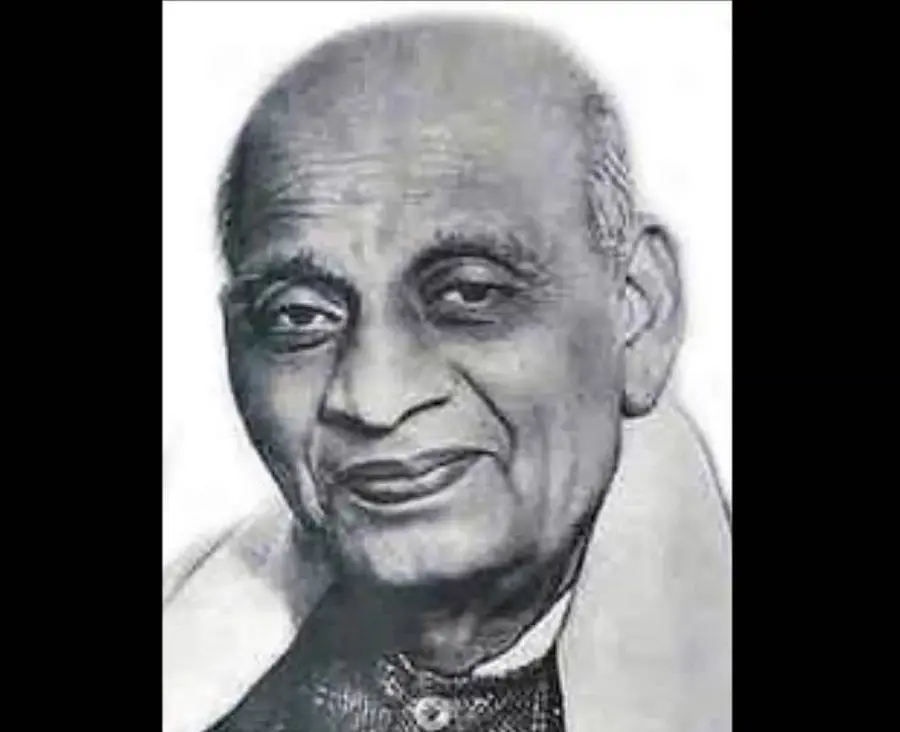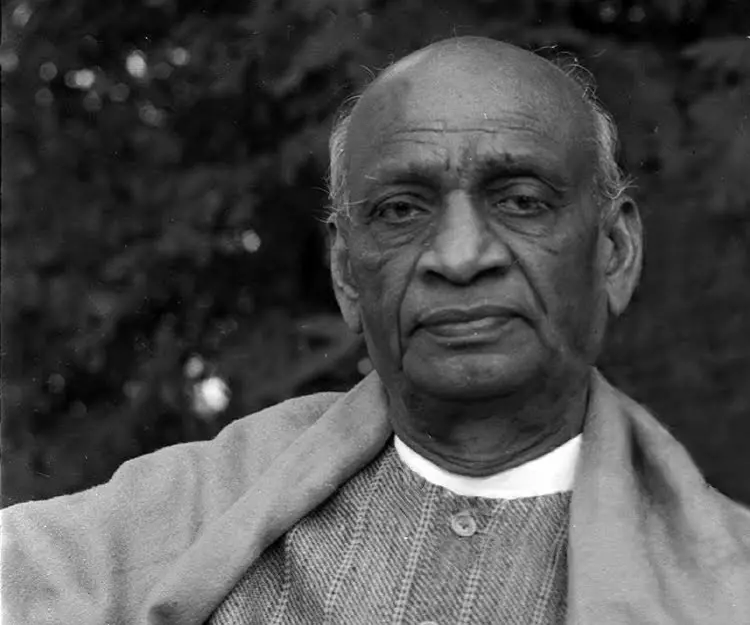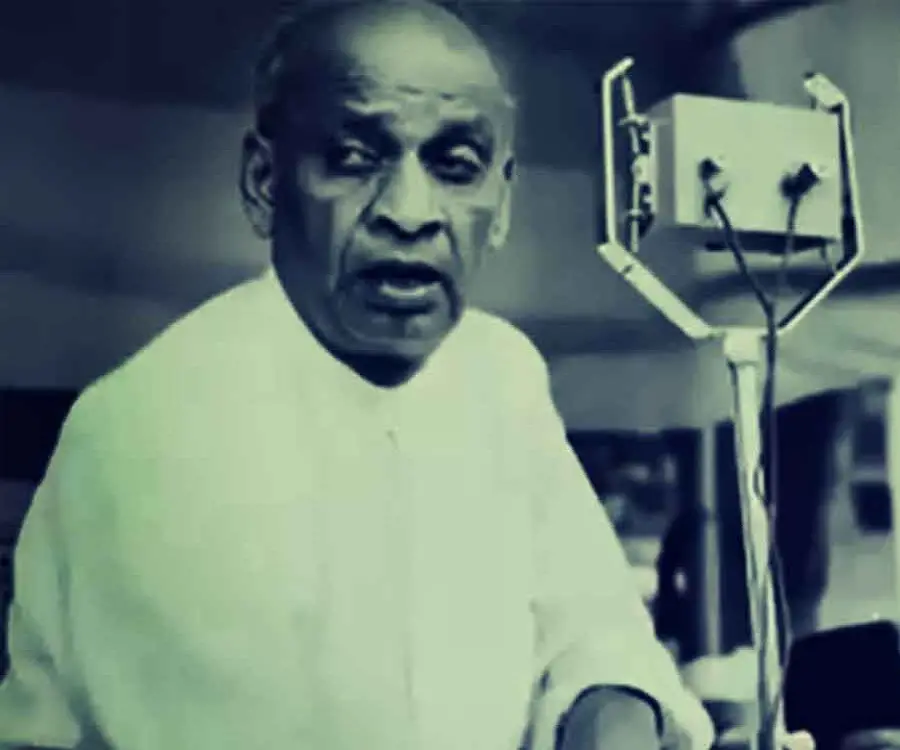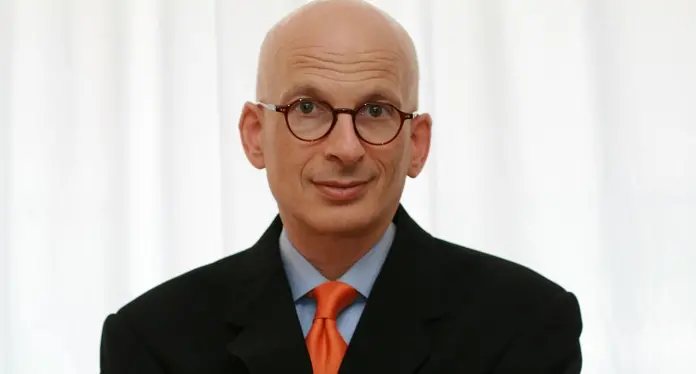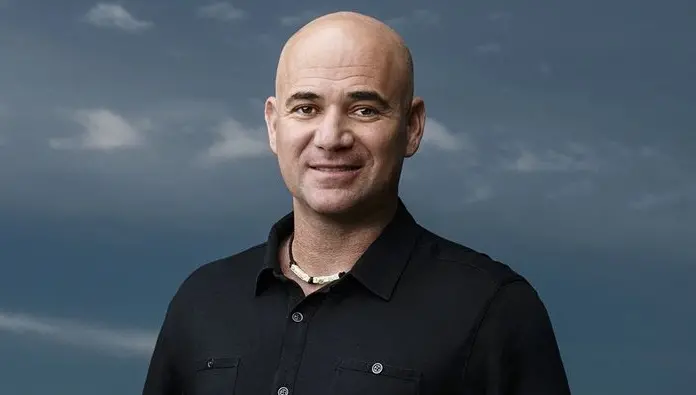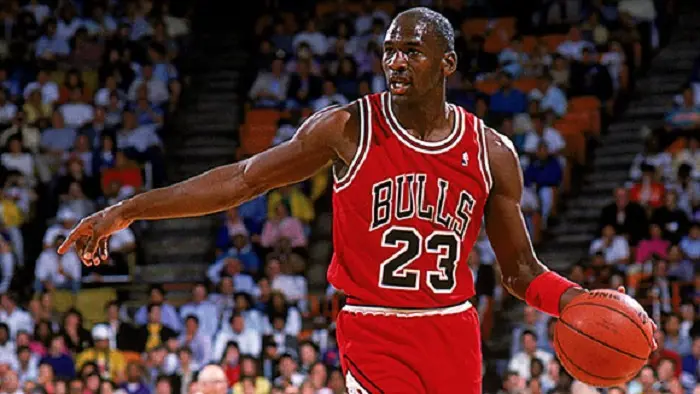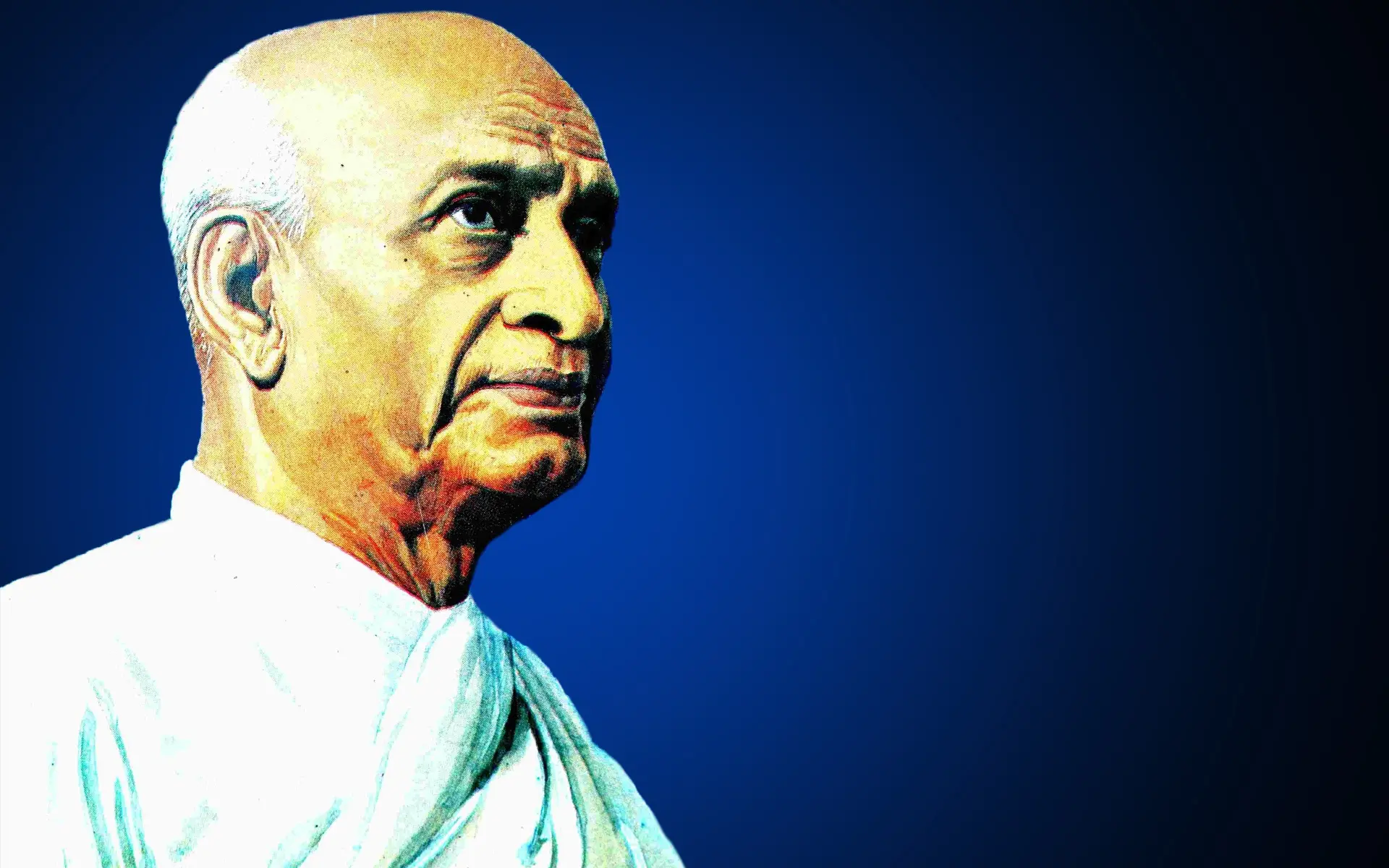
Sardar Vallabhbhai Patel - Iron Man of India, Life Achievements and Childhood
Sardar Vallabhbhai Patel's Personal Details
One of the greatest leaders of India, Sardar Vallabhbhai Patel played a crucial role in the freedom struggle and unifying of India
| Information | Detail |
|---|---|
| Birthday | October 31, 1875 |
| Died on | December 15, 1950 |
| Nationality | Indian |
| Famous | Bald, Leaders, Political Leaders, Iron Man of India |
| Spouses | Jhaverba Patel |
| Siblings | Dahiba, Kashibhai, Narsibhai, Somabhai, Vithalbhai Patel |
| Known as | Sardar, Iron Man of India, Bismarck of India, Patron Saint |
| Childrens | Dahyabhai Patel, Maniben Patel |
| Universities |
|
| Birth Place | Nadiad |
| Political Ideology | Indian National Congress |
| Religion | Hinduism |
| Gender | Male |
| Father | Jhaverbhai Patel |
| Mother | Laad Bai |
| Sun Sign | Scorpio |
| Born in | Nadiad |
| Famous as | Iron Man of India |
| Died at Age | 75 |
Sardar Vallabhbhai Patel's photo
Who is Sardar Vallabhbhai Patel?
Popularly known as the Iron Man of India, Sardar Vallabhbhai Patel was one of the founding fathers of the Republic of India. A statesman of integrity, he played a quintessential role in helping India garner independence from the British rule. However, his role in the independence struggle did not end with just that as he was the man who guided the country to become a united, independent nation. Born in a Gujarati family, Patel was academically trained to become a lawyer. However, inspired by the works and teachings of Gandhi, he switched to give his life for the Indian struggle for independence. One of the leaders of the Indian National Congress, he raised to prominence in his home state for his outstanding work of saving peasants of Gujarat from the oppressive policies imposed by the British Raj, through non-violent civil disobedience. It wasn’t long before Patel became the trailblazer in the nationalist movement. It was for his ability to lead from the front that he was given the forename, Sardar, meaning Chief. Patel is also credited for establishing modern all-India civil services and for the same, is remembered as the ‘Patron Saint’ of India's civil servants. It was his sheer sense of wisdom, practical acumen, sharp mind, great organizational skills and political insight that helped Patel become one amongst the greatest leaders of India.
// Famous Political Leaders
Edi Rama
Edi Rama is the current Prime Minister of Albania. Check out this biography to know about his childhood, life, achievements, works & timeline.
Khalifa bin Zayed Al Nahyan
Sheikh Khalifa bin Zayed Al Nahyan is the current President of the United Arab Emirates (UAE). Check out this biography to know about his birthday, childhood, family life, achievements and fun facts about him.
Leo Varadkar
Cam Leo Varadkar is the current Taoiseach—the Prime Minister—of the Republic of Ireland. Check out this biography to know about his childhood, family life, achievements and other facts about his life.
Childhood & Early Life
Born to a Gujarati family in the village of Karamsad, Sardar Vallabhbhai Patel was the fourth of the six children of his father, Jhaveribhai. He had three elder brothers, and a younger brother and sister.
Ever since the young age, Vallabhbhai showed streak of being tough and physically strong. Twice a month, he would indulge in day-long fast, abstaining from food and water.
Much of his education was attained in schools in Nadiad, Petlad and Borsad. He completed his matriculation at the age of 22. While others in his family thought him to be unambitious and unfocussed, Vallabhbhai had plans of becoming a barrister.
To fulfill the same, he spent a number of years away from his family. He studied on borrowed books from lawyers, worked hard and saved funds and cracked the examination in two years.
In the early years of practice, Vallabhbhai had a reputation of being a fierce and skilled lawyer. He practiced in Godhra, Borsad and Anand. He even served as the first chairman of the E.M.H.S (Edward Memorial High School).
Having enough bank balance, Vallabhbhai applied for a pass and ticket to England, which was granted to him under the name ‘V.T. Patel’. Vithalbhai, who bore the same initials, lured by the opportunity to fulfil his long-since harboured plan, requested Vallabhbhai to allow him to travel in the latter’s place.
For the sake of family honor and prestige, Vallabhbhai allowed Vithalbhai to go in his place. What’s more, he even financed his brother’s stay and started saving again to accomplish his goals.
It was in the year 1911 that Vallabhbhai Patel finally lived his dream as he travelled all the way to England. He topped the 36-month course which he had enrolled in. It was a remarkable feat as Patel had no formal college education, unlike most others.
Though Patel was offered lucrative post by the British Government, he rejected them all to come back to India. Upon arriving in India, Patel started practicing as a barrister in Ahmedabad. Soon he became a name to reckon with in the legal circles. His European-style clothes and urban mannerism had become the talk of the town. Working hard, Patel greatly expanded his practice and his wealth.
Entry Into Politics
In 1917, Patel stood for an election to become the sanitation commissioner of Ahmedabad which he won comfortably. Meanwhile, Patel’s interest in politics grew, as he heard Gandhiji speak for the Swadeshi Movement. Inspired by the words of Gandhi, Patel started active participation in the Indian independence movement.
A meeting with Gandhi at the Gujarat Political Conference in Godhra led to Patel being designated to the position of the secretary of the Gujarat Sabha, which would become the Gujarati arm of the Indian National Congress.
Patel’s involvement in politics grew astronomically. He fought against servitude of Indians to Europeans, organized relief efforts during plague and famine in Kheda and took a leading role in the non-violent Civil Disobedience Movement against the payment of raised tax, levied by the British. His leadership activities earned him the title of ‘Sardar’.
He travelled village to village, garnering support from peasants and other villagers for a state-wide revolt by refusing the payment of taxes. He laid emphasis on unity and non-violent demeanor despite provocation and also briefed the villagers of the potential hardships that they might have to face in the process.
When the revolt was launched, the British government responded by conducting raids at the holdings of the farmers. They even imprisoned thousands of villagers. The revolt had attained a national status and earned empathy from people across the country.
Embarrassed by the same, the government agreed to negotiate with Patel. Not only did they suspend the payment of revenue for the year, they even scaled back the rate of tax, thus making Patel a national hero.
In 1920, Patel was nominated and elected as the President of the newly formed Gujarat Pradesh Congress Committee. He supported the non-cooperative movement initiated by Gandhi.
Once a follower of Western fashion, Patel switched to khadi. He even organized several bonfires of British goods in Ahmedabad. Apart from these, Patel supported the empowerment of women and worked for abolishing alcoholism, untouchability and caste discrimination from the society.
In his three terms as Ahmedabad's municipal president, he transformed the city completely. He extended electricity, drainage and sanitation facility to all parts of the city and conducted major educational reforms. He even fought for the recognition and payment of teachers
What is interesting to note is that Sardar Patel was successful in building unity and trust among the people, who despite falling into different caste and community and divided by socio-economic lines, were united for a cause.
In 1928, the village of Bardoli suffered from famine and steep tax hikes. To curb the problem, Sardar Patel organized a struggle, which called for non-violent unity from the villagers and a demand for complete denial of the taxes to the Government.
The fate of the satyagraha started in Bardoli was similar to that of Kheda as the British government agreed on repealing the tax hike. The victory brought Sardar Patel into limelight and highlighted his role as a typical ‘Sardar’ or ‘leader’. Due to this, more and more people started addressing him as Sardar Patel.
Vallabhbhai Patel was appointed as the interim leader of Congress in the 1931 Karachi session. During his term, Patel committed to protecting the fundamental rights and human freedom and envisioned India as a secular nation.
It was during this time that the relationship between Gandhi and Patel blossomed. The two, despite having arguments and contrasting theories, shared a close bond of love, affection, trust and respect.
Since 1934, Patel played a significant role in the Indian National Congress; he became chairman of its Central Parliamentary Board. His profile included raising funds, selecting candidates and determining Congress stance on issues and opponents. Though he did not contest in the election, he helped several Congressmen in getting elected in the provinces and at the national level
Role in Quit India Movement
An ardent supporter of Gandhi, Vallabhbhai Patel took active participation in the Gandhi-led Quit India Movement. He believed that the mass civil disobedience would compel the British to leave the nation like in Singapore and Burma.
Under the pressure of Gandhi and Patel, the All India Congress Committee launched the mass civil disobedience in the form of Quit India Movement on August 7, 1942.
Patel influenced the large crowd that had assembled to take part in the civil disobedience, which included forced shutdown of the civil services and refusal to pay taxes. It was his powerful speech that electrified nationalist, even those who were sceptical about the rebellion.
Vallabhbhai Patel was arrested two days later on August 9 and was released after three years on June 15, 1945. Strikes, protests and revolutionary activities ruled India and Indians during this time with the result turning out in the country’s favour, as British decided to leave India and transfer the power to Indians.
Role in Partition
In the 1946 election for the Congress Presidency, Patel was nominated as the candidate for the elections. However, he refused the position on the advice of Gandhi, which was eventually taken over by Jawaharlal Nehru. The election was important in terms of the fact that the elected President would lead free India's first Government.
Patel was free-India’s first Home Minister and Minister of Information and Broadcasting. He was also the first of the Congress leaders to support the partition of India, as a solution to curb the rising communal violence and Muslim separatist movement, led by Mohammad Jinnah.
He managed to lobby for the partition successfully, by making Nehru, Gandhi and other Congress leaders accept the proposal. He represented India on the Partition Council, and oversaw the division of public assets. Though patel argued to have agreed for the partition to cease communal violence, little did he anticipate the bloody violence and population transfer that would take place as a result of it.
Role in Indiaâ
At the time of independence, India was divided into three parts. The first was the one directly under control of the British Government, the second was the territories rules by hereditary rulers and third was the territory colonized by France and Portugal.
Patel had realized that the dream for a unified and free India could only be achieved if the three territories were integrated as one. Blessed with practical acumen, great wisdom and political foresight, he took up the uphill task of unifying India.
He began lobbying with the princes and monarchs of the separate states to accede to the government in full faith, who were given two choices by the British – either to join India or Pakistan or stay independently.
Patel’s untiring efforts and relentless appeals reaped fruitful result as he successfully persuaded 565 states, except the three states of Jammu and Kashmir, Junagadh, and Hyderabad. He used the tactics of invoking patriotism in the Indian rulers and proposed favourable terms for the merger
Junagadh on the other hand had acceded to Pakistan. With more than 80% population as Hindu and its distance from Pakistan, Patel demanded Pakistan to annul accession and forced the Nawab of Junagadh to accede to India. Hyderabad too joined the Indian Union by force, after tha Razakar forces failed to match up to the Indian army.
As for Kashmir, it was during the Pakistani invasion of Kashmir in September 1947 that Kashmir's monarch acceded to India. Patel then oversaw India's military operations to secure Srinagar and the Baramulla Pass. In the days to follow, Indian forces retrieved much territory from the invaders.
Personal Life & Legacy
Sardar Vallabhbhai Patel tied the knot at the age of 18, to Jhaverba, who was twelve years of age then. Following the traditional Hindu customs, which allowed the bride to stay with her parents until her husband had a decent income and an established household, the two stayed apart for a few years until Sardar Patel had definite income to fall back on.
Along with Jhaverba, he set up a house in Godhra. The couple was blessed with a daughter, Manibehn, in 1904, and a son, Dahyabhai, two years later.
In 1909, Jhaverba, who was suffering from cancer, underwent a major surgical operation. Though the operation was successful, Jhaverba’s health continued to decline. She passed away the same year. Patel was against remarrying and instead raised his children with the help of his family.
Patel’s health started declining in the summer of 1950. Though he was taken care of intensely, his health worsened. To recuperate, he was flown to Mumbai, where he lodged at the Birla House.
Sardar Patel breathed his last on December 15, 1950 after a massive heart attack. He was cremated at Sonapur – the ceremony was attended by a million people, including Prime Minister Nehru, Rajagopalachari and President Prasad.
Posthumously, Sardar Vallabhbhai Patel was awarded with India’s highest civilian award, Bharat Ratna in 1991. His birthday, which falls on October 31, is celebrated as Sardar Jayanti.
While his home in Karmsad has been preserved in his memory, in 1980 Sardar Patel National Memorial was established, which houses a museum, a gallery of portraits and historical pictures and a library.
A number of educational institutes in India have been named after him, including the nation’s premier institutes Sardar Vallabhbhai National Institute of Technology, Sardar Patel University, and Sardar Patel Vidyalaya,
Sardar Patel Statue of Unity
In order to honour the pivotal contribution of Sardar Patel in integrating India,after independence, by uniting 562 princely states, Government of India is planning to build a 182 metres (597 ft) tall statue of Sardar Patel. It will be the world's tallest statue and will be built directly facing the Narmada Dam, 3.2 km away on the river island called Sadhu Bet near Vadodara in Gujarat. The total cost of the whole project will be Rs 2,979 crore.
Trivia
He is popularly known by two names, the ‘Iron Man of India’ and ‘Bismarck of India’.
For his leadership activities and the ability to lead thousands of people, he was given the forename ‘Sardar’.
He was instrumental in the founding the Indian Administrative Service and the Indian Police Service and is therefore known as the ‘Patron Saint’ of India's services
He successfully completed the uphill task of unifying the princely states of India to join the Indian union. He persuaded the princes of 565 states to accede to India.
// Famous Leaders
Edi Rama
Edi Rama is the current Prime Minister of Albania. Check out this biography to know about his childhood, life, achievements, works & timeline.
Tecumseh
Tecumseh was a Native American leader of the Shawnee clan. This biography profiles his childhood, life and timeline.
Khalifa bin Zayed Al Nahyan
Sheikh Khalifa bin Zayed Al Nahyan is the current President of the United Arab Emirates (UAE). Check out this biography to know about his birthday, childhood, family life, achievements and fun facts about him.
Sardar Vallabhbhai Patel's awards
| Year | Name | Award |
|---|---|---|
Other | ||
| 0 | 1991 - Bharat Ratna | |
Sardar Vallabhbhai Patel biography timelines
- // 31st Oct 1875Born to a Gujarati family in the village of Karamsad, Sardar Vallabhbhai Patel was the fourth of the six children of his father, Jhaveribhai. He had three elder brothers, and a younger brother and sister.
- // 1909In 1909, Jhaverba, who was suffering from cancer, underwent a major surgical operation. Though the operation was successful, Jhaverba’s health continued to decline. She passed away the same year. Patel was against remarrying and instead raised his children with the help of his family.
- // 1911It was in the year 1911 that Vallabhbhai Patel finally lived his dream as he travelled all the way to England. He topped the 36-month course which he had enrolled in. It was a remarkable feat as Patel had no formal college education, unlike most others.
- // 1917In 1917, Patel stood for an election to become the sanitation commissioner of Ahmedabad which he won comfortably. Meanwhile, Patel’s interest in politics grew, as he heard Gandhiji speak for the Swadeshi Movement. Inspired by the words of Gandhi, Patel started active participation in the Indian independence movement.
- // 1920In 1920, Patel was nominated and elected as the President of the newly formed Gujarat Pradesh Congress Committee. He supported the non-cooperative movement initiated by Gandhi.
- // 1928In 1928, the village of Bardoli suffered from famine and steep tax hikes. To curb the problem, Sardar Patel organized a struggle, which called for non-violent unity from the villagers and a demand for complete denial of the taxes to the Government.
- // 1931Vallabhbhai Patel was appointed as the interim leader of Congress in the 1931 Karachi session. During his term, Patel committed to protecting the fundamental rights and human freedom and envisioned India as a secular nation.
- // 1934Since 1934, Patel played a significant role in the Indian National Congress; he became chairman of its Central Parliamentary Board. His profile included raising funds, selecting candidates and determining Congress stance on issues and opponents. Though he did not contest in the election, he helped several Congressmen in getting elected in the provinces and at the national level
- // 1942Under the pressure of Gandhi and Patel, the All India Congress Committee launched the mass civil disobedience in the form of Quit India Movement on August 7, 1942.
- // 1945Vallabhbhai Patel was arrested two days later on August 9 and was released after three years on June 15, 1945. Strikes, protests and revolutionary activities ruled India and Indians during this time with the result turning out in the country’s favour, as British decided to leave India and transfer the power to Indians.
- // 1946In the 1946 election for the Congress Presidency, Patel was nominated as the candidate for the elections. However, he refused the position on the advice of Gandhi, which was eventually taken over by Jawaharlal Nehru. The election was important in terms of the fact that the elected President would lead free India's first Government.
- // 15th Dec 1950Sardar Patel breathed his last on December 15, 1950 after a massive heart attack. He was cremated at Sonapur – the ceremony was attended by a million people, including Prime Minister Nehru, Rajagopalachari and President Prasad.
// Famous Bald
Mike Tyson
Mike Tyson is a former heavyweight boxing champion, known for his ferocious and intimidating style. Read this biography to know about his life, profile & timeline.
Seth Godin
Seth Godin is an American author, entrepreneur, marketer and public speaker who has written 17 bestsellers on topics like, post-industrial revolution, marketing, leadership, etc. Check out this biography to get detailed information on his life.
Andre Agassi
Andre Agassi is a legendary American tennis player and winner of eight Grand Slam titles. Explore this biography to learn more about his childhood, life, achievements and timeline.
Michael Jordan
Michael Jordan is a retired basketball player, known for being the ‘NBA’ champion on six occasions. This biography provides detailed information about his childhood, profile, career and timeline
LL Cool J
James Todd Smith, or LL Cool J, as he is better known, is a hip-hop artist, actor and music mogul from America. Read on to find out more about his childhood, career, profile and timeline.
Zinedine Zidane
Zinedine Zidane is one of greatest all-time soccer players that the world has witnessed. He led France to victory in the 1998 World Cup. Read this biography to get info about his life, profile, childhood & timeline.
Sardar Vallabhbhai Patel's FAQ
What is Sardar Vallabhbhai Patel birthday?
Sardar Vallabhbhai Patel was born at 1875-10-31
When was Sardar Vallabhbhai Patel died?
Sardar Vallabhbhai Patel was died at 1950-12-15
Where was Sardar Vallabhbhai Patel died?
Sardar Vallabhbhai Patel was died in Mumbai
Which age was Sardar Vallabhbhai Patel died?
Sardar Vallabhbhai Patel was died at age 75
Where is Sardar Vallabhbhai Patel's birth place?
Sardar Vallabhbhai Patel was born in Nadiad
What is Sardar Vallabhbhai Patel nationalities?
Sardar Vallabhbhai Patel's nationalities is Indian
Who is Sardar Vallabhbhai Patel spouses?
Sardar Vallabhbhai Patel's spouses is Jhaverba Patel
Who is Sardar Vallabhbhai Patel siblings?
Sardar Vallabhbhai Patel's siblings is Dahiba, Kashibhai, Narsibhai, Somabhai, Vithalbhai Patel
Who is Sardar Vallabhbhai Patel childrens?
Sardar Vallabhbhai Patel's childrens is Dahyabhai Patel, Maniben Patel
What was Sardar Vallabhbhai Patel universities?
Sardar Vallabhbhai Patel studied at Middle Temple
What is Sardar Vallabhbhai Patel's political ideology?
Sardar Vallabhbhai Patel's political ideology is Indian National Congress
What is Sardar Vallabhbhai Patel's religion?
Sardar Vallabhbhai Patel's religion is Hinduism
Who is Sardar Vallabhbhai Patel's father?
Sardar Vallabhbhai Patel's father is Jhaverbhai Patel
Who is Sardar Vallabhbhai Patel's mother?
Sardar Vallabhbhai Patel's mother is Laad Bai
What is Sardar Vallabhbhai Patel's sun sign?
Sardar Vallabhbhai Patel is Scorpio
How famous is Sardar Vallabhbhai Patel?
Sardar Vallabhbhai Patel is famouse as Iron Man of India
